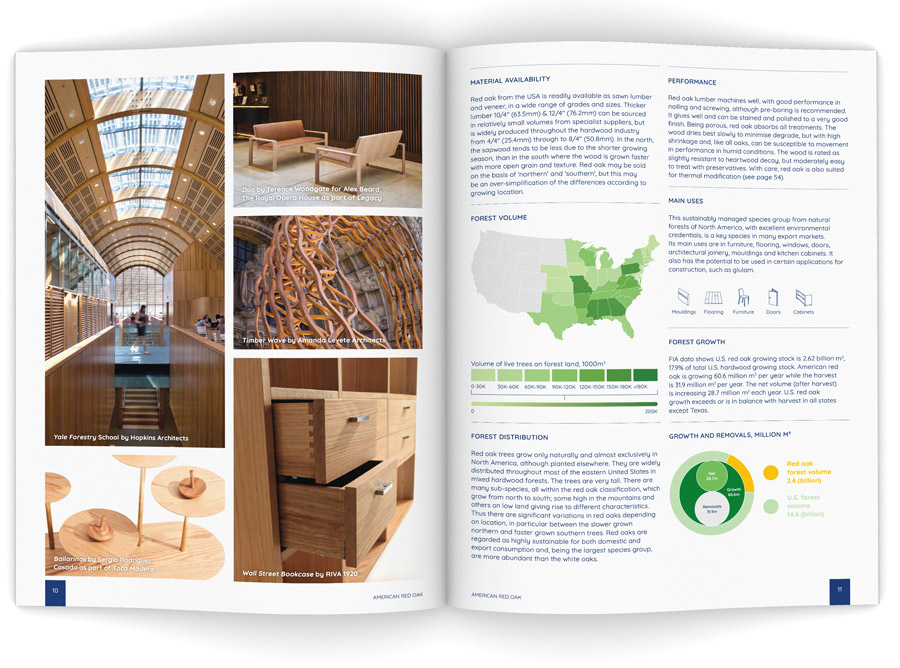Information, education, inspiration
28 October 2020The American Hardwood Export Council has brought together its species and grading guides into a single Guide to Sustainable American Hardwoods, complete with lavishly illustrated application case studies. Its aim is to provide a publication that ‘informs, educates and inspires’ and meets the needs of a broad audience, from timber traders, through end-users to specifiers.
“The idea was to retain the value of the previous technical guides as practical tools, but at the same time to make the new guide very visual and engaging,” said AHEC marketing manager Lauren Smith. “We wanted to bridge the disconnect there can be between trade and specifier; showing traders some of the amazing projects where US hardwoods are used and specifiers how the timber is sourced and selected.”
Reflecting increasing international market concern with the environment and climate crisis, the 100-page publication is sharply focused on the sustainability and legality of the American hardwood resource. It details the comprehensive legality risk assessment commissioned by AHEC, its American Hardwood Environmental Profile documentation (AHEP) and online interactive map showing forest distribution, growth and timber removal.
“The map makes that real connection back to the forest,” said Ms Smith. “It shows the scale of the resource, but also that some species are more abundant than others, helping users make smarter environmental choices. It’s about joining the dots.”
Further highlighting renewability, each species section gives the time taken by the forest to regrow a cubic metre, derived from AHEC’s online life cycle assessment tool.
Alongside detailed technical performance data, the species section features applications of the timber. These range from furniture in cherry, maple and red oak created for AHEC’s latest design project Connected, to the ash cladding and furniture in the Hogeschool van Amsterdam in Holland and the 40,000m2 of red oak used for cladding, flooring and glulam screening in Bloomberg’s European headquarters in London.
In line with AHEC’s emphasis on using the range of timber the forest provides to make most sustainable use of the resource, the Guide also covers lesser used varieties such as hickory, pecan, elm and basswood. It looks too at thermal modification of US hardwoods and their use in engineered timber products.
The grading section uses information from the National Hardwood Lumber Association.
“The main audience for this may be the timber trade, but we find designers and architects are interested in the topic; to understand the different specifications of timber available,” said Ms Smith.
The Guide can be downloaded from www.americanhardwood.org.
